Polymer sand wells: comparison with reinforced concrete
How do polymer-sand wells differ from reinforced concrete analogues? Which of these options is better and why? What are the features of the operation of polymer structures? The answer to these and similar questions we will give in this article.
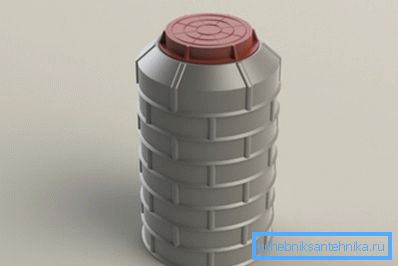
Composite materials out of competition
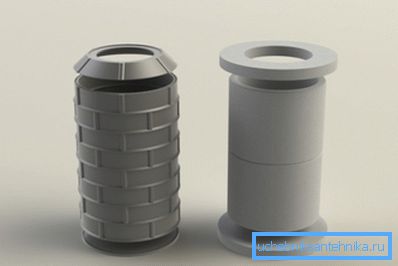
Starting the construction of any structure, which will be operated for a long time, we are trying to choose the most durable and durable material. That is why, at one time, reinforced concrete rings began to be used as the basis for water intake structures (find out here how to clean the well in the country house).
But progress does not stand still, and therefore as an alternative to reinforced concrete products polymeric sand wells were used. Structures created using composite materials immediately found their customer.
As a result, when replacing broken concrete structures, install wells of polymer-sand composite, which significantly extend the life of water intake systems.
Advantages of polymer-sand structures
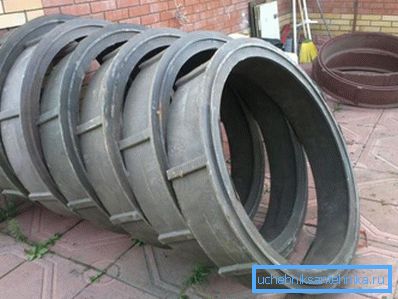
Among the advantages of composite products, we note:
- absolute tightness;
- simplicity and short deadlines for installation;
- low weight;
- ease of transportation;
- affordable cost;
- wide range of configurations;
- almost unlimited resource.
How and from what are produced composite wells
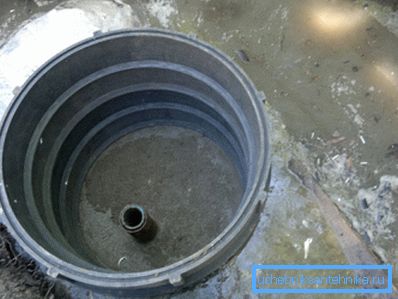
Polymer sandy well is made of composite materials. These are especially durable plastics, to which sandy filler is added. Certain components are integrated into the finished mixture that provide the material with certain qualities, such as strength, elasticity, resistance to critical temperatures, etc.
Polymer sand well is manufactured under high pressure and high temperature. As a result, the structure of the material is sintered in a single unit with an almost complete absence of pores. Due to the low porosity of the production material, such wells are considered the most airtight and durable.
Structural features of composite wells
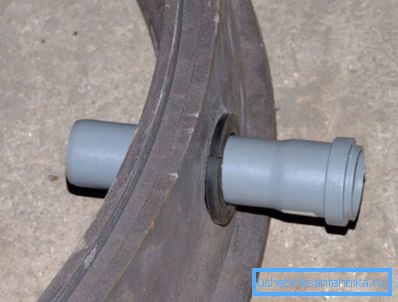
For a long time, reinforced concrete was considered the only effective material that can be used for the production of rings for water intake mines, wells and sewers. But, as practice of operation of such structures shows, reinforced concrete is a material that is far from perfect.
Therefore, with the failure of a reinforced concrete well, they prefer not to make repairs, but to install a more modern and durable polymer-cement analogue.

In order to understand what the structural features of composite structures are, let's compare them with reinforced concrete analogues and decide which is better.
- Weight and ease of transportation - This is an important quality, which is taken into account when choosing building materials. Reinforced concrete wells are heavy (approximately 0.5 tons), and therefore special equipment will be required during loading and installation. In addition, for transportation of concrete components will need a transport with a large carrying capacity.
Other characteristics are inherent in composite structures. For example, the weight of the finished well is only 60-70 kg.
Important: To cope with the loading and installation of such facilities will be able to two people without the need to use special equipment!
- Features of installation of concrete rings suggest the need for the use of cement mortars and waterproofing materials. But this does not guarantee absolute tightness. As a result, giving preference to concrete structures, you spend money and time on high-quality installation, but sooner or later you will have to carry out repairs, as cement will wash away with groundwater.
The assembly of composite rings is carried out with the use of groove-tongue connecting elements, thanks to which the structures are not afraid of mechanical loads, ground movements and high humidity. In order for the tightness of the connection to remain unchanged for several decades, the joints can be missed with bitumen mastic.
- Hydrophobicity - This is a distinctive feature of composite structures. Due to production technologies, polymer sanding rings are characterized by water absorption of no more than 0.03%.
According to laboratory tests, a polymer-sand structure can withstand up to five hundred freeze-thaw cycles at temperatures from -50? 150? With no violations of the structure. Of course, concrete, which we considered as a comparison, does not differ in such qualities.
- Resistance to aggressive substances - This is another quality inherent in polymer sand structures. Composite structures will last many times longer than concrete counterparts, which will gradually begin to collapse in the first few years in the first years of operation.
Important: If concrete wells need to be constantly treated with antiseptic preparations to ensure preservation, then composite materials do not need this. As a result, polymer-sand wells are profitable and economical to use.
- The instruction of joining a reinforced concrete well to the pipeline requires the punching of the ring and cementing the gaps. This is a complex time-consuming process, due to which the price of the finished structure increases significantly.
In composite materials, the gaps and holes for pipeline installation are easy to make, moreover, this does not require any special equipment.
- Another point to pay attention to is the warranty period.
Manufacturers of reinforced concrete structures declare that such wells retain their technical characteristics for 50 years. In fact, the restoration work will be required after ten years of operation. Joints between concrete rings retain their original characteristics for 5-10 years, after which they need to be restored to their tightness.
Wells made of composite materials during the entire declared resource, which is about 100 years, do not provide for the need for repairs.
Conclusion
So, we found out that a precast polymer well is better than a common concrete structure today. We told about the distinctive advantages characteristic of composite wells and now it will be easy for you to choose the optimal solution for a particular water intake system (see also the article Centrifugal Pump for a Well: help in choosing and features of use).
More useful and interesting information you can find by watching the video in this article.